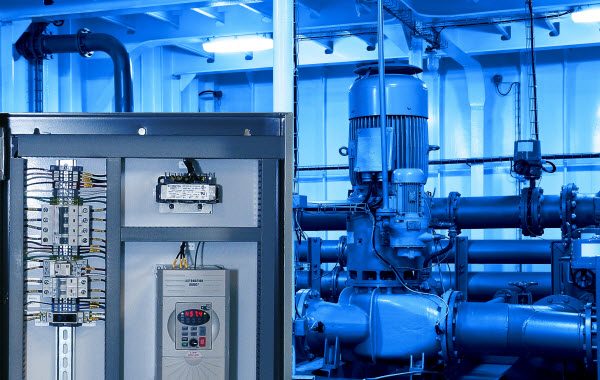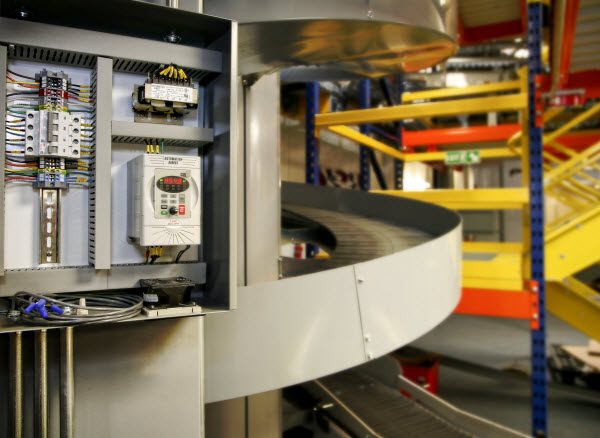For well over 30 years, variable frequency drives (VFD) have been controlling the speed of three-phase alternating-current (AC) induction motors. In addition to saving energy, there are many things to consider for maximum efficiency, control, operation and motor life when using VFDs.

A VFD’s speed control is necessary for applications where variable torque and horsepower are needed such as centrifugal pumps, blowers, fans, mixers and agitators. Operating at lower speed offers significant energy savings. Other key features included variable acceleration and deceleration, non-emergency motor start-stop control and overload protection.
To realize the benefits of VFDs in variable speed motor applications, let’s look at the top ten tips in the Table.
Table: Top Ten Tips for Specifying and Using VFDs
- 1. Understand and use benefits and features
- 2. Size based on loads
- 3. Select braking options
- 4. Interface to the VFD
- 5. Understand digital communication options
- 6. Apply the right control mode
- 7. Define the motion profile
- 8. Outline installation requirements
- 9. Specify operation parameters
- 10. Handle noise and harmonics
Reducing motor speed saves energy in a variety of fan, blower and pump applications. Reduced inrush current when starting a motor along with controlled acceleration and deceleration are also big benefits. Features on the VFD, such as a keypad or potentiometer, allow manual adjustment of parameters, including speed and torque. Automatic adjustment of these parameters is also possible using a PLC or other controller.
When it comes to sizing the VFD, don’t just match the horsepower of the motor. Review of the operating profile is important as changing loads, and continuous running or frequent starts and stops, changes torque and peak current demands.
Peak current demands may create temporary overload conditions, yet the VFD must provide adequate current for proper motor performance. In an application, such as a conveyor with a heavy load, high breakaway torque may demand power and torque, requiring an oversized VFD. The additional headroom provided by a larger drive is worth the small increase in price and extra required panel space.

When decelerating a motor, a VFD can provide approximately 20% of the available torque for braking. For heavy loads and frequent start-stop applications, adding a braking resistor can significantly increase braking torque.
Interface, Communication and Control
Typical run, jog and speed control functions in a VFD are selected using discrete or analog outputs signals from a controller.
Often a combination of discrete, analog and preset control is used. For example, a controller sends an analog speed signal to a drive, and discrete signals to control run and jog functions, with acceleration and deceleration parameters hardcoded.
To reduce or eliminate hardwiring, digital communication such as Modbus RS-232/RS-485, EtherNet/IP or other protocols can be used to control the drive and set parameters. This type of communication also enables monitoring of the drive status, such as speed and current, and may also enable remote configuration capability.
Some drive control modes require specific types of AC drives. Volts-per-Hertz (V/Hz) drives are most common, and work well for pump and fan applications. As speed accuracy requirements increase, open-loop sensorless-vector drives, and closed-loop VFDs with encoder feedback, provide accurate speed regulation for web handling, paper mills, printing presses and converting applications.

Understand Motion, Installation and Operation
Before setting a drive’s parameters, be sure to understand the motion profile required. What speed is needed; and can the motor accelerate slowly or must it start quickly, are just some of the questions to be answered. VFD parameters must also be understood for optimum drive setup and control.
VFDs create heat during operation that may need to be vented out of the control cabinet, particularly if there are frequent starts and stops. Running a motor at low speeds for extended periods also adds heat and usually requires an inverter-duty rated motor, which includes a built-in fan.
The AC drive manual covers many installation requirements. An important installation note is to not use a contactor or disconnect switch at the AC drive input for run-stop control, but only to remove power from the drive input under an emergency stop condition. Use discrete signals or digital communication for non-emergency start and stop functions during normal operation.
Noise and harmonics generated by a VFD can damage connected motors and nearby equipment. Passive harmonic filters such as AC line reactors and chokes are often installed to reduce these problems. Check the drive installation manual and use these filters to reduce harmonics and protect the VFDs from transient overvoltage. Active harmonic filters can also be used to reduce noise generated by the VFD.
For more information, please see the article Top 10 Tips for Specifying & Using Variable Frequency Drives in the May 2017 issue of Processing, authored by Joe Kimbrell, Product Manager, Drives


